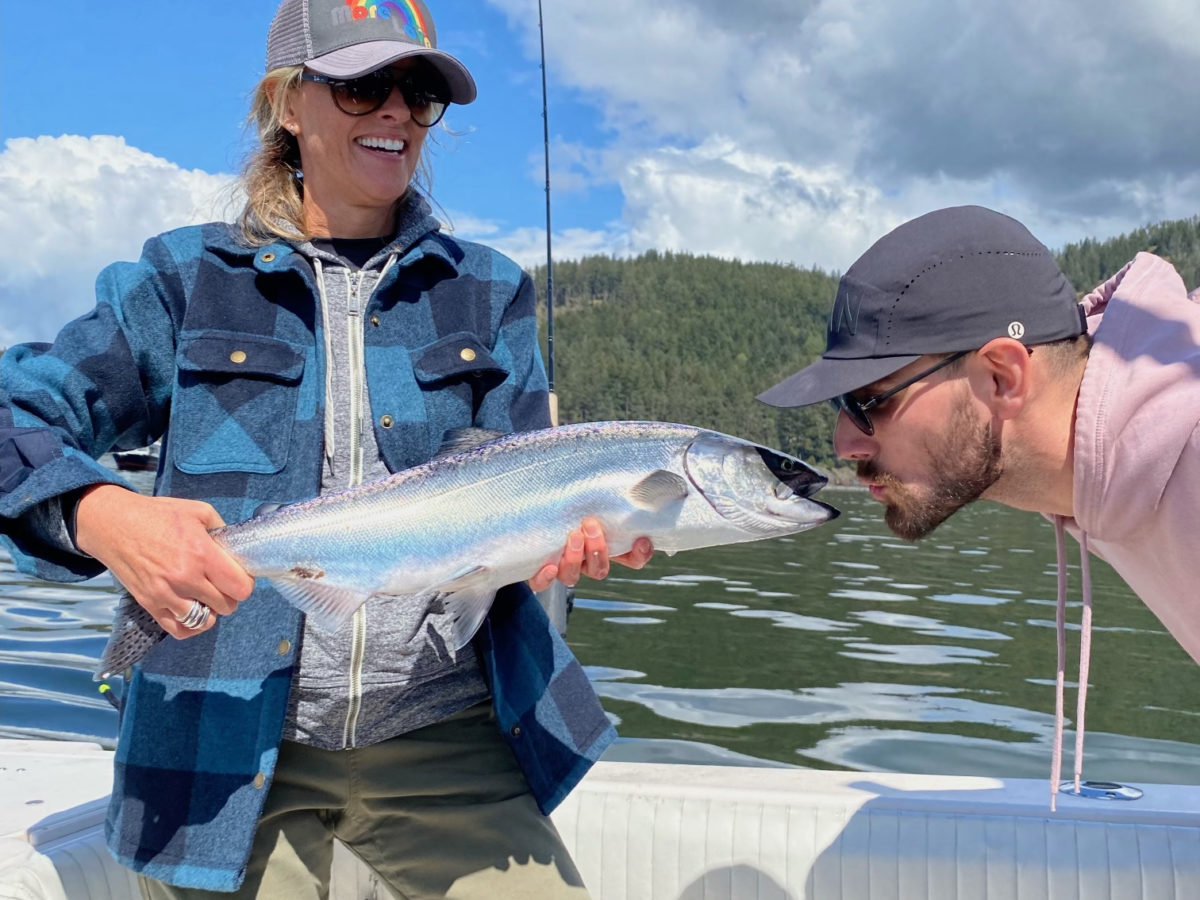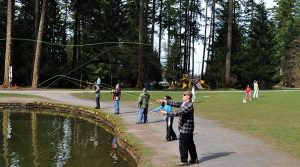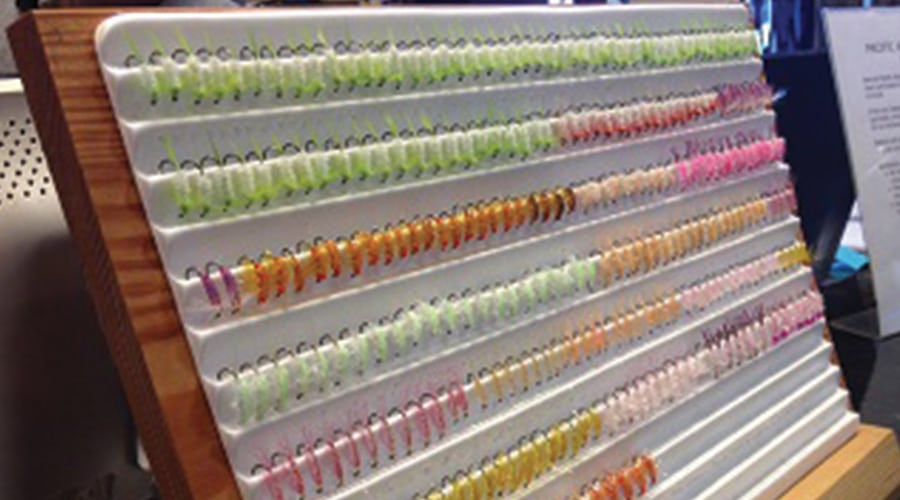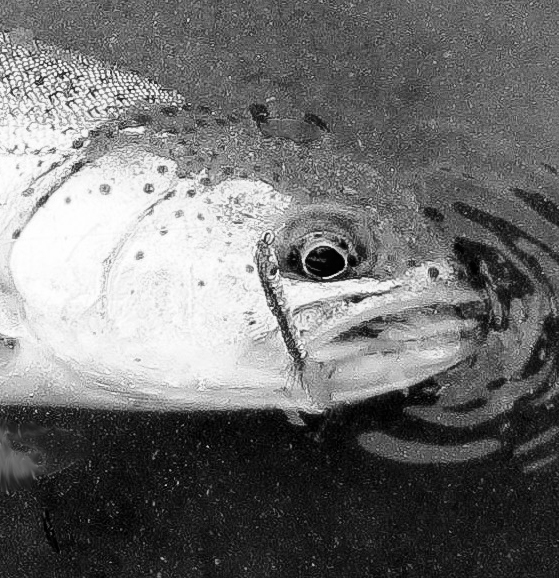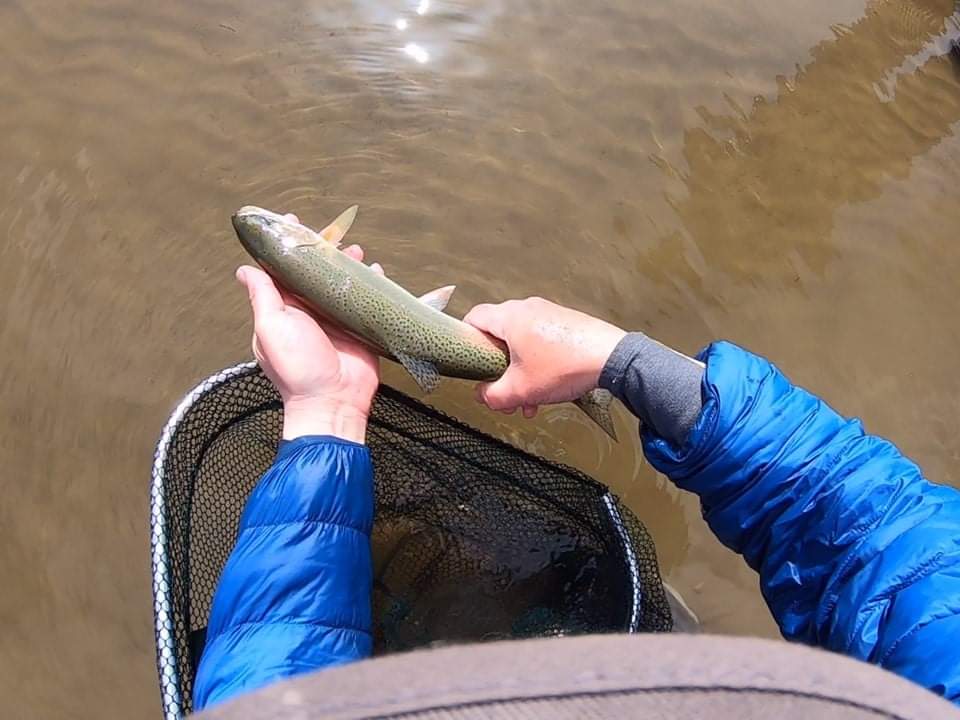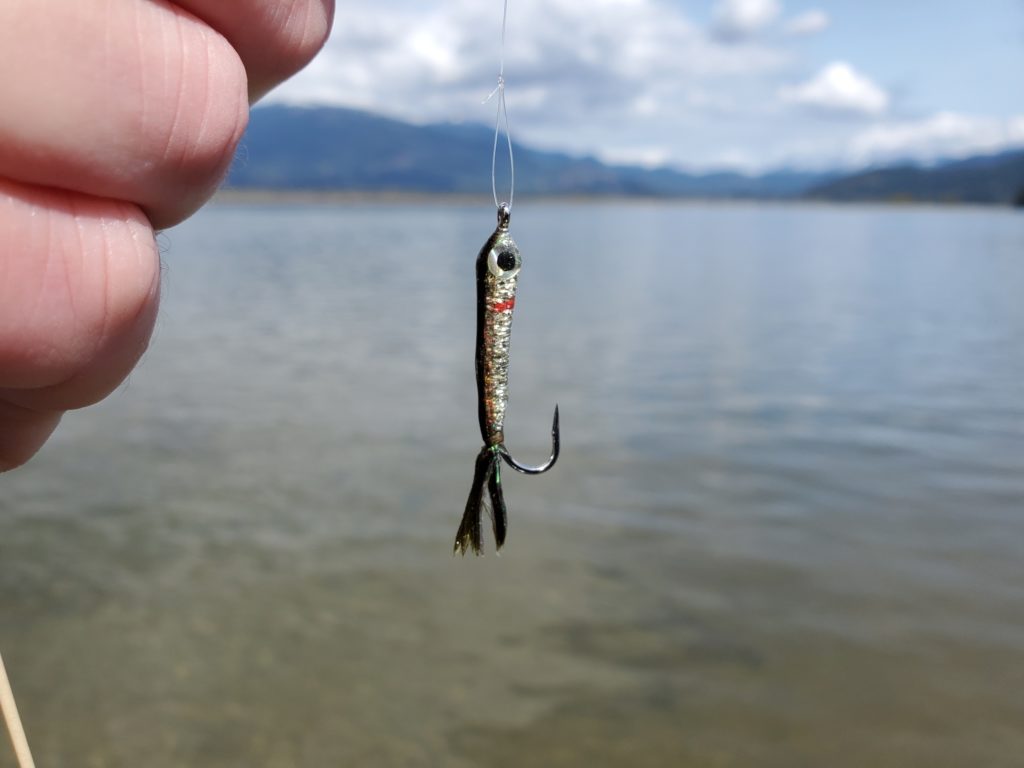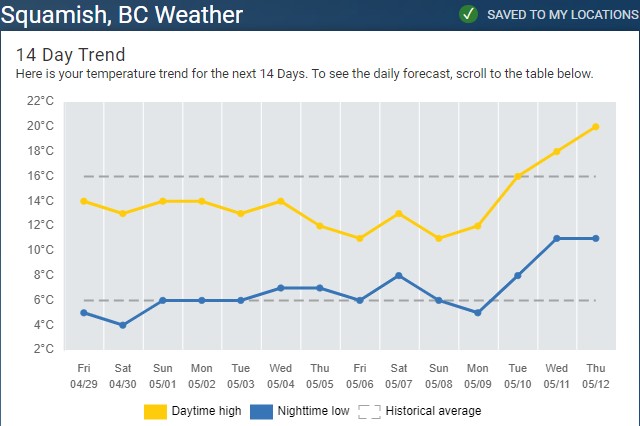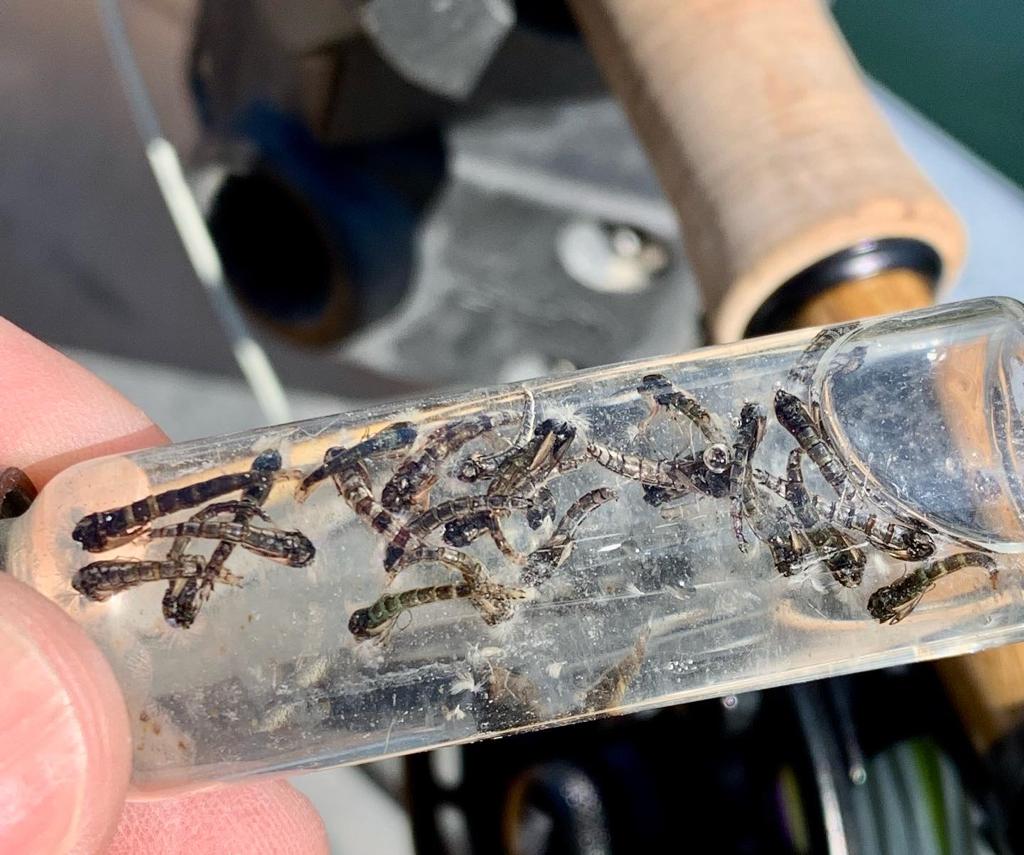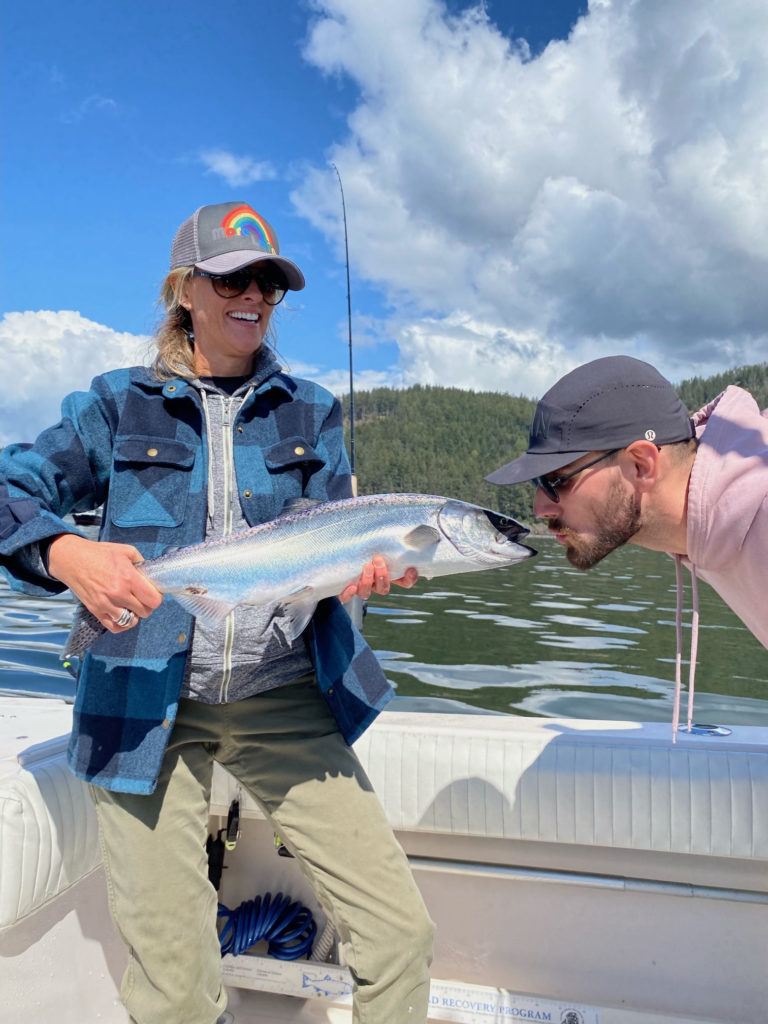OUTLOOK
Things continue to be unseasonably cool but the upside is that it has made for some great fishing weather. Lakes are icing off in the interior and the reports we are hearing are excellent. In this week’s report we will cover our usual fishing updates along with a special feature on sounders for lake fishing. Jason has taken his knowledge of sounders from the saltwater world and applied it to the shallow water game. If you have been thinking about putting a sounder on your boat you will not want to miss this article.
For saltwater anglers bottom fishing across the straight opens on Sunday (May 1)! We are stocked up in the store with paddle tails, drop jigs and ball weights. Jason is back this week with a saltwater update on where you can catch and release salmon as well as have fun with bottom fishing in the same day. Check it out at the end of this week’s report.
On the river front the Squamish continues to stay in shape out in the valley conditions continue to be good though areas are closing on May 1st up the Chilliwack River. There should still be good fishing opportunities on both systems for at least the next week or two. With cooler temperatures forecasted to continue until the 10th of May both these fisheries are well worth a look.
The cutthroat fishing has also been very good. We were concerned about fry numbers in the early part of the spring but we are seeing good numbers now and with a late fry hatch the cutthroat are hungry. If you do not want to head out of the lower mainland this weekend the cutthroat spots are well worth a hike right now.
Last but not least were back in May with another offering of our Introduction to Fly Fishing course and Andre is back in the shop for his Tying Beach Patterns course. Call the shop at 604.872.2204 to sign up for these courses today.
CLASSES AND COURSES
INTRODUCTION TO FLY FISHING
This course was specifically designed to give the new fly fisher the basic knowledge, casting skills and fly fishing strategies to effectively fish our local BC waters. This course is comprised of two sessions; 3hr evening seminar and a 3hr casting session. The dates below show the seminar date first and casting date second.
Dates: May 10 & 14
Cost: $150.00 + GST
Zoom Seminar Time: 6:30pm – 9:30pm
Casting Time(s): 10am – 1pm or 1:30pm -4:30pm
TYING BEACH FLY PATTERNS
Join Pacific Angler for a 3hr evening seminar of tying flies specific to catching salmon on our coastal beaches. Without a doubt, fly selection is critical while beach fishing. These flies are often not commercially available, so successful beach anglers learn to tie their own patterns. Your instructor will walk you through each fly pattern step-by-step.
This Tying Beach Fly Patterns course is suitable for fly tiers with a basic knowledge. Students are required to supply their own vise, tools and materials. A 10% discount is available on fly tying materials and tools purchased for the course.
Dates: May 18, 2022
Cost: $50.00+GST
Time: 6:30pm – 9:30pm
FRESHWATER FISHING REPORTS
Vedder/Chilliwack River Fishing Report
This weekend marks some annual regulation changes on the C/V, put in place to protect critical spawning for Steelhead.
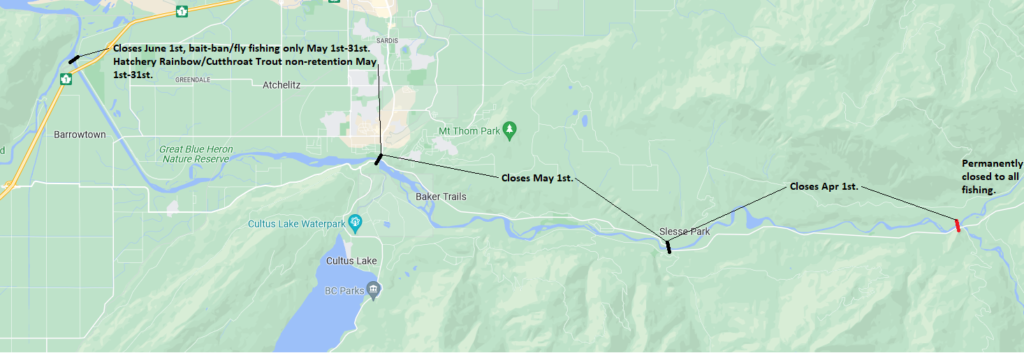
Effective May 1st onward:
-You are no longer permitted to fish above the Vedder Crossing Bridge.
-There is a bait ban / fly fishing only on the open portions of the river.
– Hatchery Trout non-retention.
These regulations holds true until the full closure of the river on June 1st.
Keep in mind that you are not permitted to add additional weights/split shots onto your line during the fly fishing only restriction in accordance with the regulations. That means no split shot nymph rigs unfortunately. On the bright side, it is a great time time to swing flies in the lower river. With warmer
daily averages and the emergence of salmon fry, Steelhead can get very aggressive this time of year. Anything flashy and intrusive should get the attention of a fired-up fish. With the lack of conventional anglers on the river, it leaves a fair amount of real estate to swing a fly and with cooler than normal weather the river levels are still in great shape.
Get out and chase some tail,
Gavin Lau
Fraser Valley Cutthroat Update
It is uncommon that freshet, or at least higher water levels have not hit our sloughs and river by this point in the season. It is making for a rare but very cool phenomenon. Fry are late but now coming down in numbers, cutthroat are hungry and the rivers are at a great hiking level. This trifecta is something you don’t see very often.
Long story short get out to anywhere that has salmon fry and go hunting for cutthroat! The reports we have been hearing are excellent.
In terms of gear 3-5wt rods are ideal. Floating lines or slow sink tips are your weapon of choice and fry patterns or small attractor patterns are what you put at the end of it all. Cover ground, look for rising fish and have fun! This fishery should continue until we a noticeable spike in temperatures.
The warmer weather will kick in snow melt. This will bump up water levels pushing the fry out to the ocean and making the rivers hard to navigate. At least in the 7-day forecast we do not expect a major river level rise.
Good luck if you get out there!
Squamish River Fishing Report
The Squamish is following the trend of our other lower mainland systems. Historically it would be blown out right now or at least high. As we write the report it is low. It is actually much lower than we would like to see but because it is so late in the season there are fish in the system and salmon fry are out.
When we look at the 14-day trend the weather man says it will stay relatively cool until May 10th. If the weather man is on his game the above seasonal temps on the 10th should get freshet going. Until then get out and enjoy it!
Fry Patterns, streamers, spoons and worms should be in the kit right now.
Note: that if you catch a steelhead, please treat them with the utmost care. It is getting late in the season. There will be fresh fish just coming in from the ocean but there will also be older fish that are heading back to the ocean after a long and demanding spawning cycle.
Good Luck!
STILLWATER FISHING REPORTS
Interior Lake Fishing Update
The warmer weather over the last week has finally meant that we can report on the whole interior. Chironomid hatches are in full bloom on a large majority of the lakes around the Kamloops/Merritt area. A few of the higher elevation lakes are still to come off but the edges of the lakes have become ice free meaning that we’re only around 7-10 days out from every lake being ice free in the Thompson-Nicola region.
Lakes that have been ice free for over a month have already gone through turnover and are putting out consistent hatches as the water is starting to touch that 50 degree Fahrenheit mark.
You’ll want a large assortment of chironomids in sizes and colours as a smorgasbord of chronies are going to be present. A few absolute staples to have in your box are blended olive/red, zucchini’s, and window tint wrapped chironomids. Eric has been hard at work over the past couple of months cutting ASB, silver, bronze, and grey window tint into various 0.5, 0.75, and 1 mm strips. I like the 0.5mm for size 16-18, 0.75 for 14-16, and 1mm for 12-16 bombers and full body wraps.
The thaw is on in the Cariboo too. It has been a slow thaw but I expect to see stuff really open up in the next week.
Horse Lake is partially ice free and that typically means that the surrounding lakes are 4-10 days behind. The aerated, shallower, and wind exposed lakes are always the first to free up but all lakes should be ice free by the May 7th weekend if we get consistently warm temperatures.
I’d refer to the previous ice off reports I’ve been writing about over the past couple of weeks for how to tackle these lakes. Leeches and scuds will be the staples and stay shallower compared to deeper. There’s usually a narrow window pre-turnover where the fishing can be spectacular and the May 7th weekend should be great. The weather will still likely be much colder compared to the Thompson-Nicola.
Let us know where you plan on heading and we’ll cater your gear to where you’re heading
Below, Jason has a very interesting piece on depth sounders for lake fishing. For many years the technology was not there and having a sounder was “nice” but not a game changer. Things have changed. I have a hard time now tackling a lake without using a depth sounder. Below Jason will teach you some tips on how to make it a powerful tool in your interior lake fishing arsenal.
Sterling Balzer
SPECIAL FEATURE
Fish Finders and Lake Fishing
Fish finders, also known as sounders, and properly described as MFDs (multi-function displays) have come a long way. Like most things related to electronics, the advancements have been significant in a very short period.
It was not that long ago where anglers didn’t generally use fish finders on lakes in BC (bass anglers further south have always been way ahead of the curve), then came the modest Fishin Buddy that many of us used in the past which showed depth and fish (sometimes), up to today’s units packed with all sorts of features at even the most modest price points.
Luckily, we are the direct benefits of the huge bass market as MFD brands like Lowrance, Raymarine, Garmin, and Humminbird have developed price point units packed with features that appeal to anglers in smaller boats chasing bass. Just so happens these units are also perfect for the boats we like to fly fish from or troll from here in BC for trout and kokanee.
Today’s MFDs are truly amazing, and their capabilities have forever changed the way we fish lakes. No more guessing how deep it is where we are fishing, what the bottom structure looks like, not knowing how deep our gear is, if that mark is a fish or not, in fact we can even tell what side of the boat the fish are on! As if this were not enough info, today’s smaller and more affordable units even come with preloaded charts and GPS so you can mark your favorite spots or follow your lines from the day before. No more guessing if you are in the zone and if fish are present.
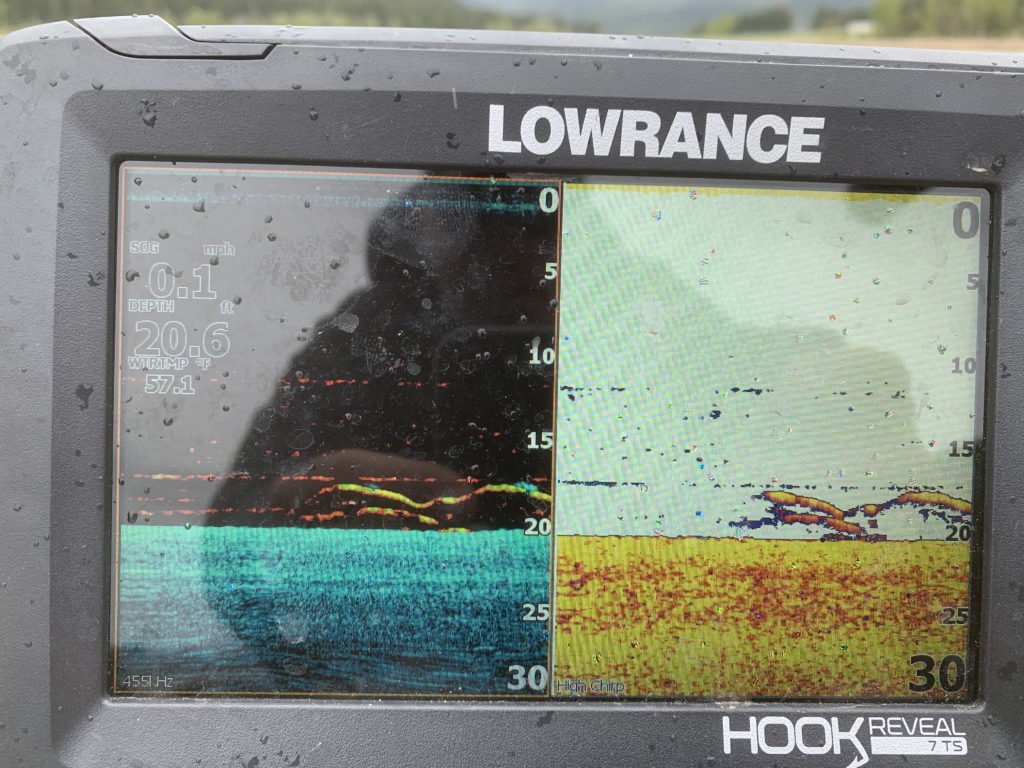
There are a variety of brands out there, but the one I have been most impressed with and have been using for the past two seasons is the Lowrance Hook Reveal. Lowrance is a leader in MFDS with a pure fishing focus. These are units designed by fisherman for fisherman, with the goal of helping you catch more fish by taking the guess work of what is going on down there. With the Hook Reveal series, you can now get amazing technology that was often reserved for higher end saltwater units in a size and price point that works for freshwater lakes.
So why do they call them MFDs? Quite simply because today’s units are not only fish finders, but as mentioned earlier, they also have built in GPS, charting capabilities, and water temperature readings, hence the term multi-function. Some units come with charts, others don’t, but almost all have a GPS where you can mark a waypoint and your movements create a trail which you can view at any time and edit or delete as needed. Obviously from a fishing perspective, looking at a chart and knowing where you are is critical. Not only for anchoring if fly fishing but particularly for trolling along ledges or shoals with gear or with the fly. You can drop a waypoint where you have had success or follow your trail to re-create the successful troll on your way back through the zone. Having this information for the next day’s trip always pays off. No more guessing and saying, “I think we were like 50 feet off that old tree there.” Now you can go right to the hot spot, not waste any time and catch more fish.
On my next day of fishing, I often try and find the spot I was having success at the previous day without my GPS and waypoints. Once I am convinced I am there, I take a look at the screen. I am usually surprised how far off I am. In the game of lake fishing, a foot or two on that drop off can make all the difference. I am usually anchoring for chironomid fishing and if I have had success in an exact anchor position one day, I want to be right there the next day, not ten feet or even five feet either side. It can be that critical. My waypoints and trails make this a breeze, and take out all the guess work, not to mention having to pull the anchor to re-position.
GPS, charts, and trails are straightforward, but the sonar or fish finding part gets a little more complicated, with multiple options to choose from. It all comes down to what transducer your MFD comes with. The transducer is the device that sends out the sound waves into the water and then receives the echoes, which the fish finder interprets and creates the image on your screen such as bottom and of course fish.
The higher the frequency (kHz) of the sound wave the more definition we get back. We want lots of definition, so high frequency is good for fishing images in shallower, freshwater situations. In general, we are looking for transducers that will operate at 200 kHz or High CHRIP. High CHIRP (Compressed High Intensity Radar Pulse) means the transducer is vibrating at a lower frequency then modulates upward to a higher frequency and then back down. In the case of High CHIRP, this range is 150-240 kHz. This gives exceptional detail and target definition, creating a more complete picture of the bottom and objects in the water column, like fish! So, in short high CHIRP is the ultimate for seeing fish and is what I recommend for lake fishing in BC. A very second close would be a 200 kHz transducer.
Some transducers will also operate at 455kHz or 800kHz frequencies and this scanning sonar provides high-resolution views to the sides (SideScan) and beneath the boat (DownScan). 800kHz provides the sharpest resolution at shallower depths, while 455kHz delivers the best overall image quality and depth penetration. These features are extremely popular with bass fisherman who use these ultra-high frequency scans to literally see structure like fallen trees or rock piles when they are fishing lakes. Sturgeon fisherman also use this on the Fraser to see debris in the river so they know if it is safe to anchor. They can also see fish to the side of the boat or under the boat depending if they are using SideScan or DownScan. SideScan can also tell you what side of the boat the fish or bait are on. This can be a big deal when it comes time to make a turn while trolling or if casting flies or lures!
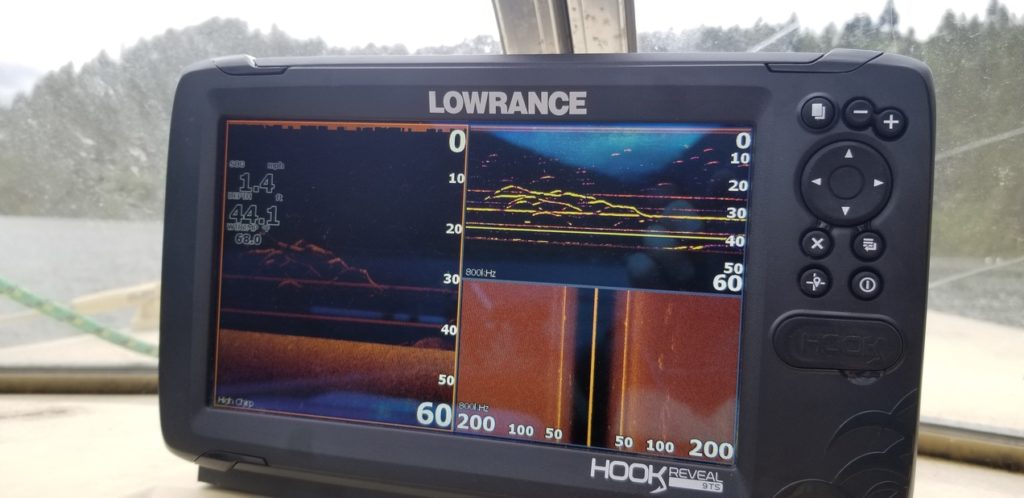
These ultra-high frequency scans provide amazing structure detail, but they don’t always mark fish as well as High CHIRP so Lowrance developed Fish Reveal. This function allows you to overlay your fish targets marked on High CHIRP with your Down Scan images, all on one screen, creating the ultimate view of structure and fish at same time, no split screen needed. Truly the ultimate for seeing what is going on down there!
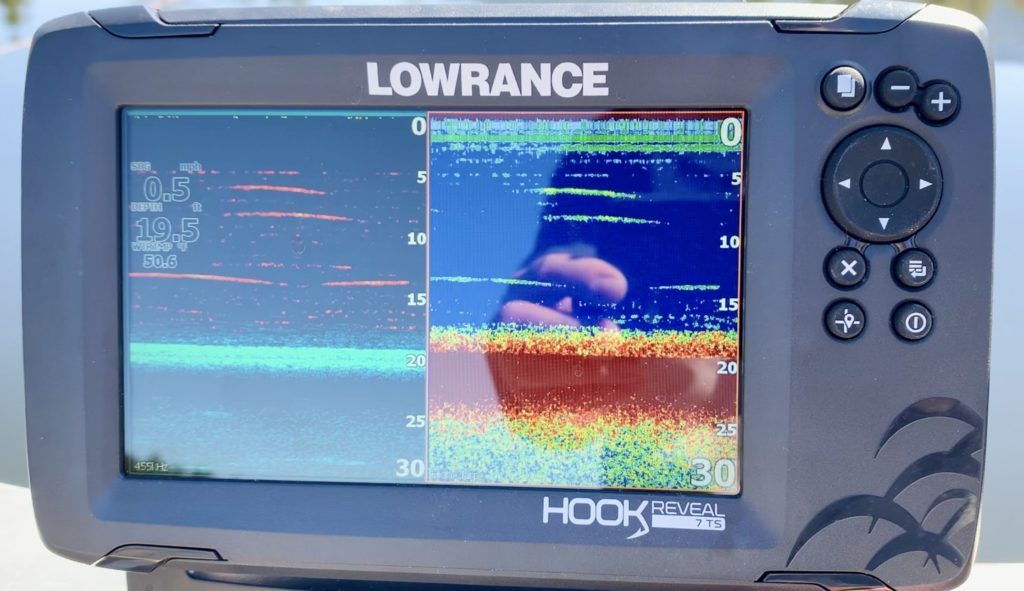
The last piece of the puzzle is transducer beam width. This is very important for lake fishing, especially if you are in relatively shallow water. This is simply how wide the beam is from your transducer when it sends out the sound wave. Think of a flashlight where you can adjust the beam. The wider the beam the more you see, the narrower the beam the less you see. The wider that beam width, the more coverage you get and the more fish you can potentially see. This is where the Lowrance Hook Reveal series really come into their own. Their transducers have ultra-wide beam widths for lake fishing for maximum coverage. Their transducers are 44-degree beam width (aka cone angle) where most traditional transducers will be in the 10-20 degree range. So, with these specialized transducers on the Hook Reveal units, you are seeing up to twice the amount of information. If you are in shallower water this can really make a difference. The deeper you go, the more area that beam has to spread out and you will see even more of the bottom and more fish.
So now I know what you are thinking. Which unit is right for me and how much does all this cost? At the end of the day, it comes down to your budget, how much you are going to use it, and what your expectations are.
A basic unit that will run at 200 kHz, find bottom, see some fish, has no GPS or charting and is a 4 inch screen is less than $150. From there they go up to about $1,000, but the majority of the packages are in the $400 to $700 range. Price depends on these factors. What size is the MFD screen? Does it have charting? What transducer does it come with?
The Hook Reveal comes in a 5 inch, 7 inch and 9 inch version with the 5 inch and 7 inch being the most popular for lake fishing. If you have a larger lake boat, the 9 inch would be the way to go. If you are in an 8 foot pram or smaller canoe or kayak, a 5 inch would be perfect. I fish a 7 inch in my Marlon SP10 and love it. The bigger the screen the more it costs, pretty simple.
The 5 inch and 7 inch model allow you to choose if you want GPS only or if you want GPS with charts. Charts are about an extra $200 so if you are happy with GPS, waypoints and trails, but no charts, you can save some money. You can’t add charts later, as they are preloaded at the factory, so give this some thought before you make your final decision.
The last factor is transducer choice. Hook Reveal units will come with either an HDI 50/200 transducer, a SplitShot transducer, or a TripleShot transducer. All work well extremely well in freshwater lakes. The HDI 50/200 will run at 50 or 200 kHz and is a great all-around transducer. The SplitShot does High CHIRP, DownScan Imaging, and has Fish Reveal. The TripleShot does High CHIRP, DownScan Imaging, Fish Reveal but it also has SideScan imaging.
The Hook Reveal units are available with or without charts and different transducers in the 3 sizes. This means there is going to be a package that fits your fishing and boating needs and your budget as well. We carry all of these at Pacific Angler and have some display models for you to check out. Also, make sure to follow us on Instagram and Facebook for an exciting Lowrance Hook Reveal announcement on May 1, 2022, that will put a smile on your face and keep your wallet happy if you are in the market for a new unit!
See you in the shop or on the water,
Jason Tonelli
SALTWATER FISHING REPORTS
Vancouver Saltwater Fishing Report
If you are heading out this weekend it looks like the winds will be good for the most part. Some SE to deal with but nothing major until Sunday afternoon. The SE brings in the lower pressure system, so no surprise that the weather forecast is for some clouds and a few rainy periods.
I would suspect most anglers will be heading across the Strait of Georgia, over to Area 17 to fish for lingcod and rockfish, which open for retention on May 1st. The limit is 1 rockfish per day and 1 lingcod per day. Make sure to consult the regulations for details on size limits, daily limits, and possession limits. We have a great selection of gear for these bottom dwellers at the shop so come by and get geared up!
Check out these past bottom fishing features on our blog, scroll down to the saltwater section of the report.
Chinook are also open in Area 17 for non-retention and fishing has been good to excellent. There is always quite a few chinook in this area late April and all of May. Depths can vary greatly from as shallow as 60 on the rigger to as deep as 280 on the rigger. Water clarity and sunlight are the main factors. If the water is dirtier from an algae bloom or Fraser freshet plume, then the fish seem to be shallower. If the water is clear and its sunny out the fish are much deeper. Since it has been so cold and cloudy for the most part, the water is on the clearer side. We haven’t had enough heat for any Fraser River freshet or enough sunny days for big algae blooms.
In terms of gear for these chinook, chartreuse is always a go to this time of year. Brighter flashers like the Salty Dawg or Lemon Lime are great choices. Spoons are productive, and like the flashers, the brighter colours are usually the best producers. Try spoons that have some glow, green and chartreuse on them. Irish Cream, Outfitter, and Trailhead are great colour choices in a Skinny G, G-Force 3.5 or Kingfisher 3.5 with 5 to 6 foot leader. Hootchies are also very productive. Like the spoons, glow, green and chartreuse shades are usually the hot colours. Try a chartreuse splatter back or a green splatter back with a 32 to 40 inch leader.
Crabbing has also been productive in our local waters. If you are thinking about booking a trip, now is a great time as we can drop some crab traps, head across to catch some bottom fish, and finish off the day with some great chinook fishing.
See you in the shop or on the water,
Jason Tonelli


